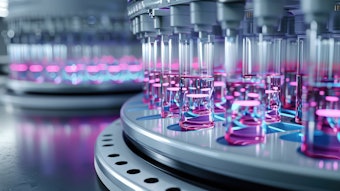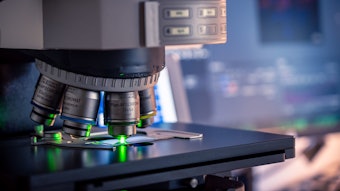Industry expert Tony O’Lenick asks: What is the difference between free radical polymerization and controlled radical polymerization (CRP)? Thomas O’Lenick, a graduate student at the University of Tennessee specializing in CRP, explains.
Radical polymerization is the reaction of vinyl monomers (CH2=CH-R) in the presence of catalyst to make high molecular weight polymers -(CH2CH(R))x-. The process is relatively easy to perform and vinyl monomers are easily polymerized. These properties account for their commercial utilization, both in industrial and in personal care applications.
There are, however, a few problems with conventional radical polymerizations, including free monomer levels and uniformity of the polymer chain. Both of these factors can be very important to the cosmetic formulator.
Recently, new methods have been developed that allow for controlling the radical polymerization to minimize monomer content and produce very uniform molecules. These processes are so-called CRPs. The control comes by a variety of techniques including the use of so-called stable free radical mediated polymerization (SFRP), atom transfer radical polymerization (ATRP) and reversible addition-fragmentation chain transfer (RAFT) polymerization.
The commonality among these methods is that they all limit and control the number of radicals reacting at any one time. This means that the monomer is added to the active chain end and not to another monomer. Monomer will continue to add to the chain until the polymerization concentration is exhausted.
These polymerization types are similar in that they polymerize monomer. Such approaches need to be quenched to stop the polymerization. They are monitored using the same analytical chemistry such as NMR or GPC. There are salient differences, however; controlled living radical polymerization techniques use different initiators/initiating species.
Controlled living radical polymerization normally shows first order kinetics, which makes it very easy to get an exact molecular weight. The uniformity of polymer distribution, the so-called “polydispersity” is much more narrow using controlled living radical polymerization.
Standard radical polymerization provides cost-effective, easy industrial methods to produce many products that are not affected by the drawbacks defined above. CRP is a method of choice to develop polymers with narrowly defined structures and molecular weights and low concentrations of residual monomers.










